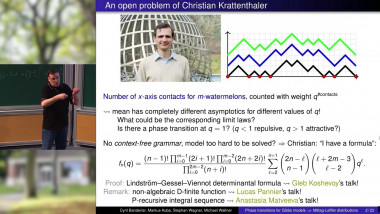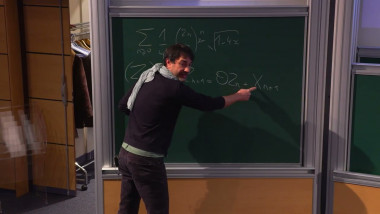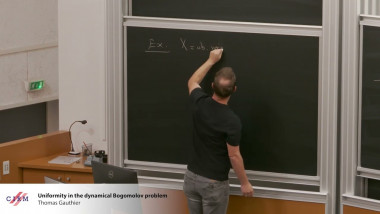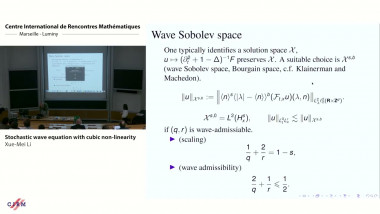Appears in collection : An introduction to dynamics on surfaces and random walks / Géométrie et Dynamiques sur les surfaces
Random walks is a topic at the crossroads of probability, ergodic theory, potential theory, harmonic analysis, geometry, and graph theory. Its roots can be traced back to the famous article by Pólya in 1921, which characterizes the recurrence of random walks on $\mathbb{Z}^{d}$ in terms of the dimension $d$. When random walks take place on a group, or more generally on a homogeneous space, it provides an even richer framework for study. From a probabilistic point of view, this additional structure serves as an extra tool, facilitating the study of the behaviour of the random walk on the underlying space. Regarding groups and their actions, random walks offer a means to explore generic or non-generic parts of groups and, at times, even to demonstrate intrinsic geometric properties, as is clearly shown by Kesten's amenability criterion (1959). This is an introductory course on the topic. Emphasis will be given on the interplay between probability and the structure of the group. The course will also provide insights into current research questions. Here is an outline of each session :
(1) Equivalent of Pólya's criterion for random walks on groups and rigidity theorems : does walking randomly on a given group in two different ways affect the recurrence of the walks ?
(2) Kesten's probabilistic criterion of the amenability of a finitely generated group ; defined in this course in terms of isoperimetric profile. The tools in 1) and 2) are essentially coming from analysis on groups.
(3) Tools coming from subadditivity to study the behaviour of a random walk on a group (drift, entropy and expansion of the random walk, etc.)















